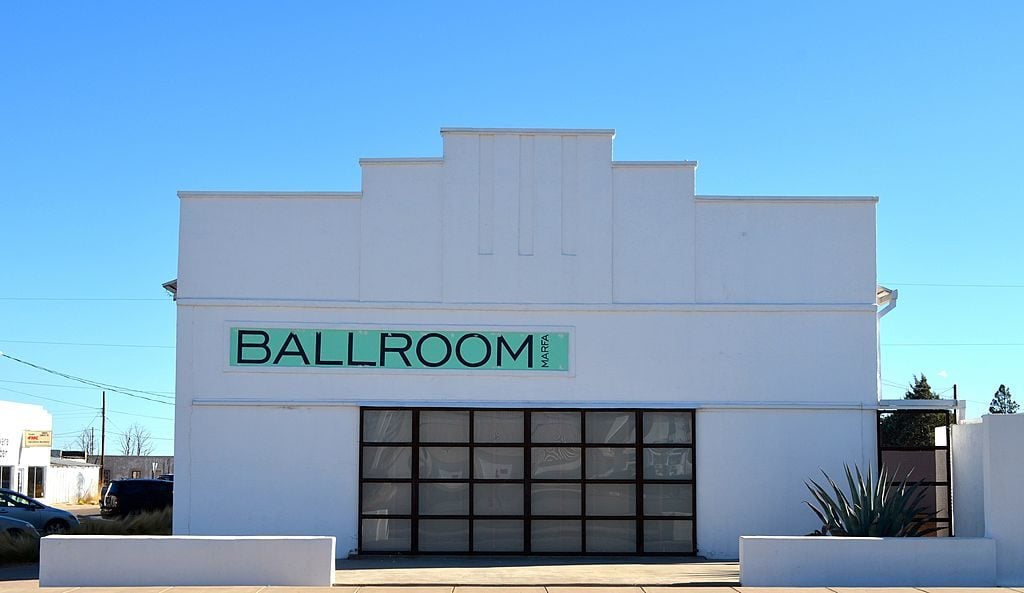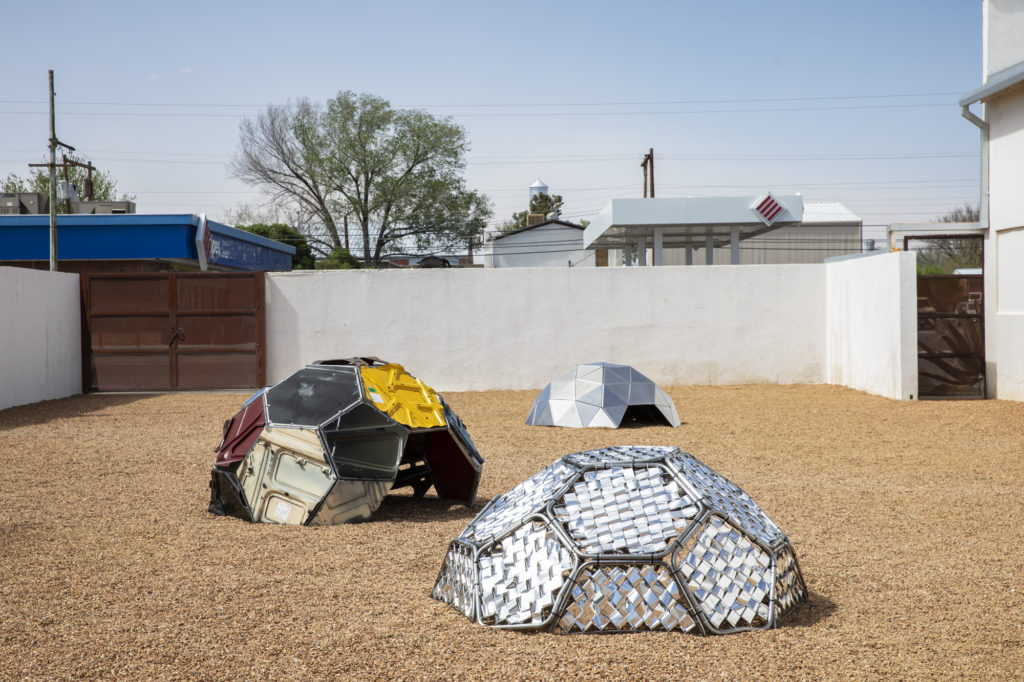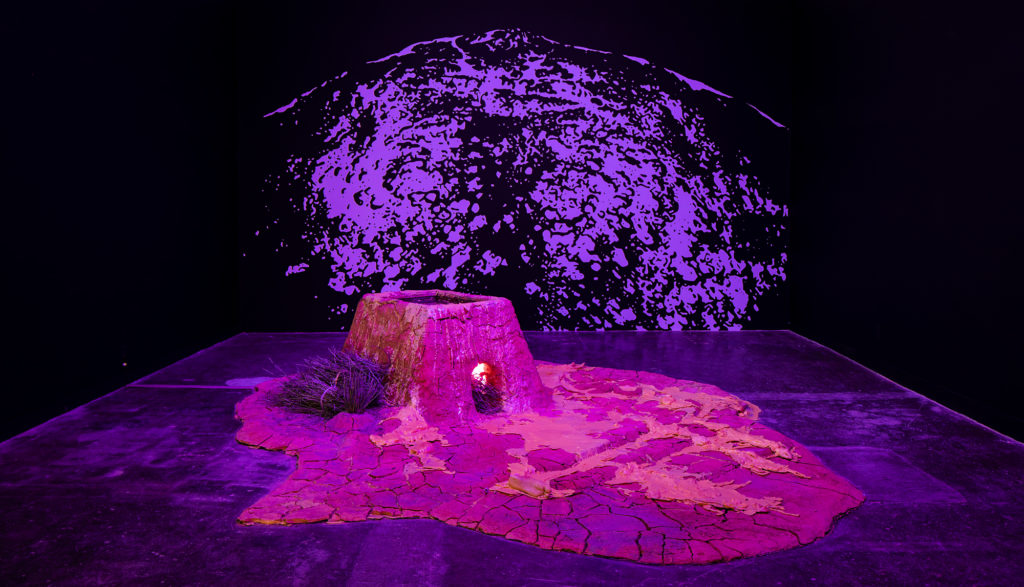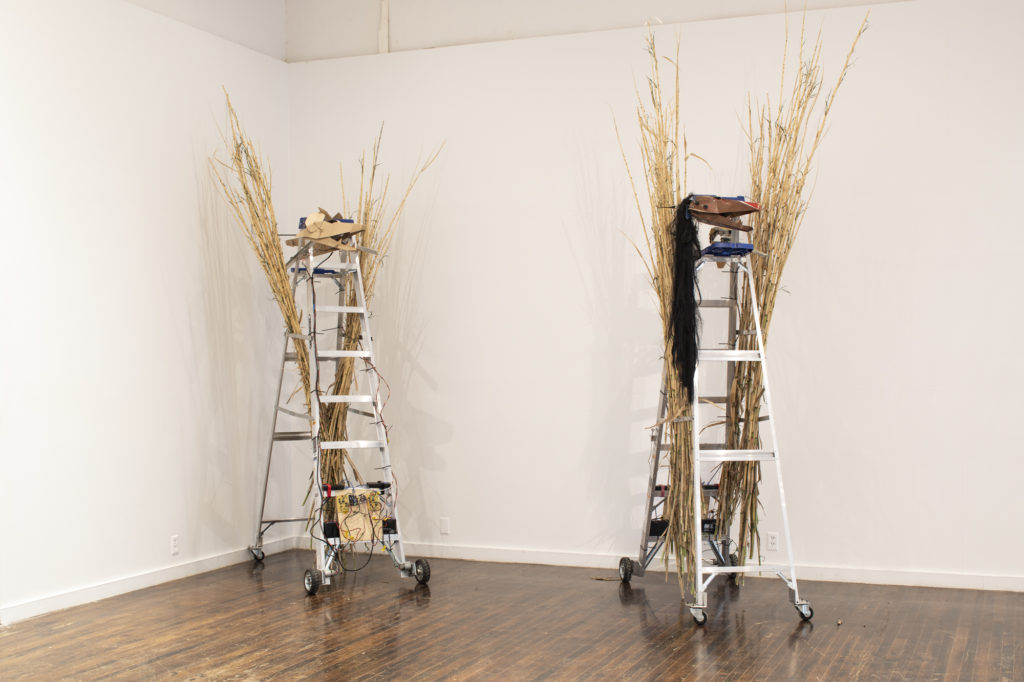Art & Exhibitions
‘We’re Closer to Mexico Than We Are to Any Major American City’: How Artists in Texas Are Addressing the Border Crisis
A show at Ballroom Marfa addresses the humanitarian and ecological crises of the border head-on.

A show at Ballroom Marfa addresses the humanitarian and ecological crises of the border head-on.

Henri Neuendorf

The US-Mexico border has been a political flashpoint for decades, and the intensity of the debate has only multiplied since the election of Donald Trump in November 2016.
In Marfa, the small artists’ enclave in deep southwestern Texas, the arts non-profit Ballroom decided to organize a show explicitly exploring border issues.
“We invited artists to come out [to Marfa] to directly respond to ecological and political issues in the borderlands,” Ballroom director and curator Laura Copelin explained. “We’re about an hour from Mexico and we’re closer to Mexico than we are to any major American city.”
The institution’s current group show, “Candelilla, Coatlicue, and the Breathing Machine,” on view until September, brings together artists Beatriz Cortez, Candice Lin, and Fernando Palma Rodríguez, each of whom has spent time in the region considering the inflamed political and ecological tensions of the border. And although their work won’t solve any problems—or change the suffering experienced by children and their families currently separated or detained—it does foreground the various issues at play in an increasingly fraught atmosphere.

Candice Lin Candelilla, Coatlicue, and the Breathing Machine at Ballroom Marfa. Photo: Alex Marks, courtesy of Ballroom Marfa.
One of the most politically charged works in the show is a domed outdoor sculpture by Cortez made of chainlink interwoven with strips of mylar. The work responds to the Trump administration’s policy of separating migrant families at the border and detaining children.
“When you drive from El Paso to Marfa, you have to drive through El Tornio, which was at [one] time one of the prisons that had the largest number of children in detention cages,” she says. “I wanted to take the same materials that the children had and make something beautiful for them. I wanted to think that another world is possible with the same materials that they had.”
The immediacy of the work is compounded by events that unfolded on the border between El Paso and Juarez while Cortez was installing the show in April. “There was chainlink fence built under the El Paso del Norte bridge connecting Juarez to the United States,” she says. “They locked central American immigrants under the bridge with chainlink and mylar blankets.”
The sculpture also draws inspiration from Cortez’s life story. In 1989, her own family was forced to flee violence in El Salvador, and the unfolding crisis echoes throughout her life. But she insists the work isn’t about her. “It’s an effort to get people pay attention to what is going on there,” she says.

Candice Lin Candelilla, Coatlicue, and the Breathing Machine at Ballroom Marfa. Photo: Alex Marks, courtesy of Ballroom Marfa.
Lin delves into both the ecology and politics of the region with her immersive new installation based on her research of the candelilla plant, a shrub native to northern Mexico and the American southwest that is picked, processed, and distributed as a food and cosmetics additive on both sides of the border. Processing this plant is extremely labor intensive and requires the harvested plant to be boiled in hot water until the wax rises to the top and is skimmed off.
On a wall above one of Lin’s works is a large-scale close-up image of the syphilis virus, based on the shrub’s latin name Euphorbia antisyphilitica. As the name suggests, the candelilla was once thought to be a treatment for syphilis.
“I was thinking about viruses and histories of disease and the racialized language around those,” Lin says. “Syphilis is interesting because it’s still debated which way it went, if it was one of the few diseases that the indigenous people gave to the Spanish colonists or just one of many diseases they brought from Europe to the Americas.”

Candice Lin Candelilla, Coatlicue, and the Breathing Machine at Ballroom Marfa. Photo: Alex Marks, courtesy of Ballroom Marfa.
For his part, Rodríguez, a member of the Nahua people, an indigenous culture that traces its roots to Mexico and El Salvador, zeroes in on issues that get lost in the immigration debate.
“The predominant idea that the Southwest is a manifestation of Mexican-American culture is incomplete,” he told artnet News in an email. “There have been many Indigenous Nations that have been there before and I wanted to make that notion more comprehensive.”
Rodríguez’s works address intersecting lands and histories north and south of the border. One of his works, a pair of wheeled sculptures constructed of ladders adorned with coyote masks, features motion sensors that activate when a visitor enters the gallery. Rodríguez says the coyote, a tough scavenger, is an important symbol of indigenous perseverance.
“For me it represents the vitality that indigenous people still show despite centuries of depravation through colonization,” he says. “We are still here, able to contribute culturally to contemporary society. We are not a living fossil but a vibrant culture, and we are able to contribute to many different aspects of life.”